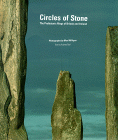<< Our Photo Pages >> Uxul. - Ancient Village or Settlement in Mexico in Campeche
Submitted by davidmorgan on Wednesday, 01 August 2012 Page Views: 11248
DigsSite Name: Uxul.Country: Mexico Region: Campeche Type: Ancient Village or Settlement
Nearest Town: Escárcega
Latitude: 17.861667N Longitude: 89.988333W
Condition:
| 5 | Perfect |
| 4 | Almost Perfect |
| 3 | Reasonable but with some damage |
| 2 | Ruined but still recognisable as an ancient site |
| 1 | Pretty much destroyed, possibly visible as crop marks |
| 0 | No data. |
| -1 | Completely destroyed |
| 5 | Superb |
| 4 | Good |
| 3 | Ordinary |
| 2 | Not Good |
| 1 | Awful |
| 0 | No data. |
| 5 | Can be driven to, probably with disabled access |
| 4 | Short walk on a footpath |
| 3 | Requiring a bit more of a walk |
| 2 | A long walk |
| 1 | In the middle of nowhere, a nightmare to find |
| 0 | No data. |
| 5 | co-ordinates taken by GPS or official recorded co-ordinates |
| 4 | co-ordinates scaled from a detailed map |
| 3 | co-ordinates scaled from a bad map |
| 2 | co-ordinates of the nearest village |
| 1 | co-ordinates of the nearest town |
| 0 | no data |
Internal Links:
External Links:
I have visited· I would like to visit
bat400 would like to visit

Inscriptions report that, around 630 A.D., Uxul was annexed under the rule of Calakmul, which was at a distance of about 26 kilometers.
Information from Eureka Alert.
Detailed map of the site at the Carnegie Institution.
Bonn University excavation website (in German and Spanish).
Note: Tomb of Maya 'Prince', Bonn archaeologists find tomb in Uxul Royal Palace - see comment.
You may be viewing yesterday's version of this page. To see the most up to date information please register for a free account.
Do not use the above information on other web sites or publications without permission of the contributor.
Click here to see more info for this site
Nearby sites
Click here to view sites on an interactive map of the areaKey: Red: member's photo, Blue: 3rd party photo, Yellow: other image, Green: no photo - please go there and take one, Grey: site destroyed
Download sites to:
KML (Google Earth)
GPX (GPS waypoints)
CSV (Garmin/Navman)
CSV (Excel)
To unlock full downloads you need to sign up as a Contributory Member. Otherwise downloads are limited to 50 sites.
Turn off the page maps and other distractions
Nearby sites listing. In the following links * = Image available
14.5km SSE 147° El Mirador* Ancient Village or Settlement
25.8km SE 140° Nakbe* Ancient Village or Settlement
34.3km NE 35° Calakmul* Ancient Village or Settlement
40.2km S 185° La Florida* Ancient Village or Settlement
56.0km SW 228° La Corona. Ancient Village or Settlement
64.2km SE 144° Uaxactun* Ancient Village or Settlement
67.4km SSE 162° El Zotz* Ancient Village or Settlement
71.0km ESE 119° San Bartolo* Ancient Village or Settlement
77.5km N 3° Balamkú* Ancient Village or Settlement
78.3km SSW 212° El Peru - Waka* Ancient Village or Settlement
80.0km NE 41° Hormiguero* Ancient Village or Settlement
80.5km SSE 152° Tikal* Ancient Village or Settlement
80.7km ESE 118° Xultun Ancient Village or Settlement
89.2km NE 36° Chicanná* Ancient Village or Settlement
91.3km NE 37° Becan* Ancient Village or Settlement
94.3km WNW 288° El Tigre (Campeche) Ancient Village or Settlement
94.8km NE 40° Xpuhil* Ancient Village or Settlement
96.2km SE 125° Cival Ancient Village or Settlement
97.3km SE 129° Holmul Ancient Village or Settlement
98.2km SE 141° Nakum* Ancient Village or Settlement
100.8km NE 36° Chactún.* Ancient Village or Settlement
101.7km S 177° Nixtun-Ch'ich' Ancient Village or Settlement
103.9km SSE 162° Ixlú Ancient Village or Settlement
104.1km S 174° Nojpetén* Ancient Village or Settlement
107.9km SE 145° Yaxha* Ancient Village or Settlement
View more nearby sites and additional images






 We would like to know more about this location. Please feel free to add a brief description and any relevant information in your own language.
We would like to know more about this location. Please feel free to add a brief description and any relevant information in your own language. Wir möchten mehr über diese Stätte erfahren. Bitte zögern Sie nicht, eine kurze Beschreibung und relevante Informationen in Deutsch hinzuzufügen.
Wir möchten mehr über diese Stätte erfahren. Bitte zögern Sie nicht, eine kurze Beschreibung und relevante Informationen in Deutsch hinzuzufügen. Nous aimerions en savoir encore un peu sur les lieux. S'il vous plaît n'hesitez pas à ajouter une courte description et tous les renseignements pertinents dans votre propre langue.
Nous aimerions en savoir encore un peu sur les lieux. S'il vous plaît n'hesitez pas à ajouter une courte description et tous les renseignements pertinents dans votre propre langue. Quisieramos informarnos un poco más de las lugares. No dude en añadir una breve descripción y otros datos relevantes en su propio idioma.
Quisieramos informarnos un poco más de las lugares. No dude en añadir una breve descripción y otros datos relevantes en su propio idioma.